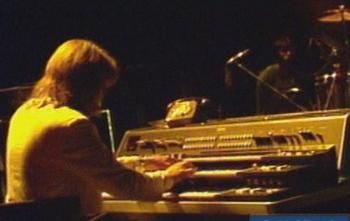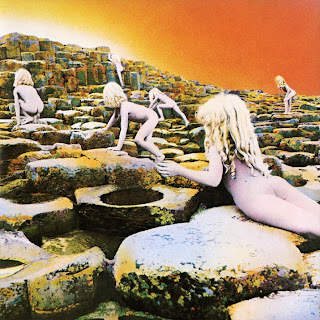Released on March 23,1973 by Atlantic Records Houses of the Holy is the fifth studio album from Led Zeppelin. The album's title is from Led Zeppelin to their fans who appeared at venues that they dubbed "Houses of the Holy" . This album became the first one to contain completely original music by the band and marks a musical turning point in the band.
 |
| Stargroves |
Much of Houses of the Holy was recorded at The Rolling Stones frontman, Mick Jagger's former Berkshire County home, Stargroves, in the Spring of 1972. There was an earlier attempted recording of the album at Headly Grange.
At the recently installed personal studios of Jimmy Page and John Paul Jones many of the songs were produced as demos. Also because of the installment of the studios in their homes, they were able to complete the arrangements that had been laid down earlier. In particular, Page was able to furnish complete arrangements of 'The Rain Song' and 'Over the Hills and Far Away' , while Jones developed 'No Quarter' .
 |
| Olympic Studios - London |
There was another round of recordings in May of 1972 at Olympic Studios and during Led Zeppelin's 1972 North American tour there was additional recording sessions at Electric Lady Studios in New York.
Some songs that were recorded at these various sessions, but did not make Houses of the Holy were, 'Black Country Woman', 'The Rover' and the title-track 'Houses of the Holy'. But these songs were kept and released on their subsequent album.
 |
| John Paul Jones |
Houses of the Holy was a turning point in the style of Led Zeppelin music and in the band's lifespan. Jimmy Page layered his guitar riffs in his production techniques and moved away from the blues influence of previous albums. With 'The Song Remains the Same' and it's intricate companion, 'The Rain Song' , Robert Plant's voice matured to a less open form of mysticism and fantasy as with the previous albums. Also on Houses of the Holy there were music styles that had not been heard on the other Led Zeppelin albums. 'D'yer Maker', for example is reggae-based and takes it's name from an old music hall joke: 'My wife went to the West Indies.' 'Jamaica?' 'No she went on her own accord.'; No Quarter has John Paul Jones' acoustic piano solo and atmospheric keyboard sounds featured; 'The Crunk is actually an attempted funk tribute to James Brown; and 'The Rain Song' is embellished by Jones on his newly owned mellotron. The albums final song, 'The Ocean', is dedicated to "the ocean" of fans who had amassed to Led Zeppelin concerts at this time of their career.
The cover of the album was inspired by Arthur C. Clark end of the novel 'Childhood's End'. It is a collage of over thirty different photographs, that eventually became eleven, taken by Aubrey Powell at the Giants Causeway in County Antrim, Northern Ireland and the two children who modeled for the album cover were siblings, Stefan and Samantha Gates. The album cover was meant to be a full-color shoot by taking advantage of the morning and evening sun, but this was never achieved because of the miserable weather. So the pictures of the two children were shot in black and white instead of color and were multi-printed to create the effect of eleven individuals on the cover.
The inside photo was that of the ancient real-life Celtic Dunluce Castle nearby.
In 1974 Houses of the Holy was nominated for a Grammy for in the category Best Album Package. In 2003 VH-1 ranked Houses of the Holy at # 6 on their VH-1's 50 Greatest Album Covers.
Houses of the Holy should have actually been released in August of 1972, but because of problems with the mix and artwork it was pushed back to January of 1973. This gave Led Zeppelin time to finish their Japanese tour and a 25 date tour of the UK, which would be the last time the band would ever tour their home country. But even with this pushed back date of January there were still snags in finishing the final product until Houses of the Holy was finally released on March 23, 1973.
 |
| Bonzo looking oh so thrilled about having his picture taken at the recording of Houses of the Holy |
Reviews for the album were mixed with much of the criticism being directed toward 'The Crunge' and 'D'yer Maker' . According to some 'The Grunge' was totally unnecessary because Zeppelin had proven that it had a funk abundance the moment John Bonham's hand[grenade drums exploded over the intro to 'Good Times Bad Times' and had repeatedly demonstrated that "white rock musicians could do things with black funk music nobody else had even thought of." *
Houses of the Holy became the band's third album to top the British charts, entering at #1, making it Zeppelin's third album to top the charts there. But this only lasted for thirteen weeks before being replaced by it's predecessor, Led Zeppelin IV. While in America it was on the American charts for 39 weeks, 2 of the weeks at #1.
* From the book 'Led Zeppelin: When Giants Walked the Earth'






No comments:
Post a Comment